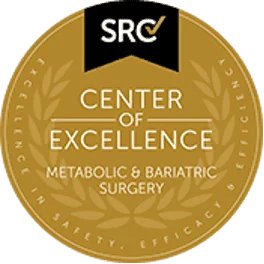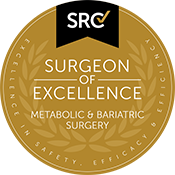Is Hernia Issues Affecting You?
What is a Hernia?
A hernia occurs when an organ or fatty tissue squeezes through a weak spot in a surrounding muscle or connective tissue.
Hernias happen more frequently in certain parts of the body such as the abdomen, groin, upper thigh area and belly button area. They also can occur in any place where you have had an incision from surgery.
Here at SGOS, we are a Sydney based specialist team that can manage all types of hernias. Dr Cheng is a high volume hernia surgeon who can perform most hernia repairs through minimally invasive surgery (laparoscopic or robotic). Talk to us today about your hernia needs.

What are Common Types of Hernias?
There are different types of hernias based on their location. The most common types are listed below.
Inguinal hernias are the most common type of hernia and occur when tissue, such as part of the intestine, protrudes through a weak spot in the abdominal muscles near the inguinal canal in the groin area. This type of hernia is more common in men than women.
Types of Inguinal Hernias
- Indirect Inguinal Hernia: This type is often congenital and occurs when the inguinal canal fails to close properly before birth. It can appear at any age.
- Direct Inguinal Hernia: This type occurs due to a weakness in the abdominal muscles that develops over time and is more common in older adults.
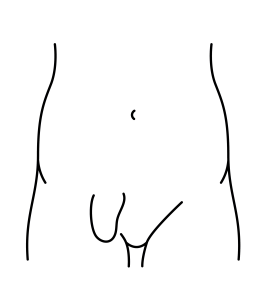
A femoral hernia occurs when tissue pushes through a weak spot in the muscle wall of the groin or inner thigh. This type of hernia is less common than inguinal hernias and is more prevalent in older women, particularly those who are pregnant and obese

A ventral hernia occurs when tissue protrudes through an opening in the muscles of the abdomen. These hernias can appear anywhere on the abdominal wall and are often classified based on their location and cause.
Types of Ventral Hernias
- Umbilical (Belly Button) Hernia: Occurs near the belly button (navel).
- Incisional Hernia: Develops at the site of a previous surgical incision.
- Epigastric Hernia: Occurs in the upper abdomen along the midline.
- Spigelian Hernia: Occurs along the edge of the rectus abdominis muscle.
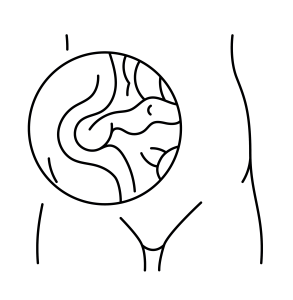
An incisional hernia occurs at the site of a previous surgical incision in the abdomen. It develops when tissue protrudes through the weakened area of the abdominal wall, where a surgical cut was made and has not completely healed.
A hiatal hernia occurs when part of the stomach pushes up through the diaphragm into the chest cavity. The diaphragm is a large muscle that helps you breathe by contracting and relaxing. It has a small opening (hiatus) through which the esophagus passes before connecting to the stomach. In a hiatal hernia, the stomach bulges up through this opening.
Hiatal hernias is a common reason for volume reflux symptoms. They can also cause other issues like retro-sternal discomfort after meals, food hold up and regurgitation, low iron levels from occult bleeding secondary to Cameron ulcers.
To understand more about reflux and hiatal hernias
Read Here: https://stgeorgeobesitysurgery.com.au/conditions/reflux/
Types of Hiatal Hernias
- Sliding Hiatal Hernia: The most common type, where the junction between the esophagus and stomach and part of the stomach slide up into the chest.
- Paraesophageal Hiatal Hernia: Less common but more serious, where part of the stomach pushes through the diaphragm next to the esophagus and remains there. This type can cause the stomach to become strangulated.
- Combination of the 1 and 2
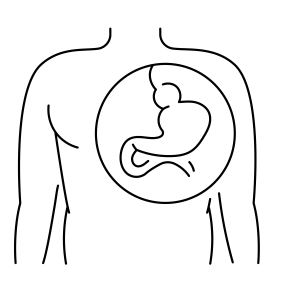
What are Risk Factors for Developing Hernias?
Risk Factors for Hernias in general include:
- History of heavy lifting
- Smoking
- Overweight or obesity
- Conditions that lead to excessive or persistent coughing
- Pregnancy
- Conditions that lead to excessive straining i.e. Constipation, Prostate issues
- Previous abdominal surgery
- Conditions that weaken abdominal wall i.e. long term steroid use
Hernia Symptoms that You May Experience
Hernia symptoms can vary depending on the type and location of the hernia.
Hernias are “reducible” if they can be manually pushed back into the abdomen or “irreducible” if they are effectively stuck in the canal. The irreducible hernia is a surgical emergency as blood supply to the herniated tissue can be disrupted resulting in tissue death. This usually requires urgent emergency surgery to correct.
Here are some common and specific symptoms associated with different types of hernias:

Common Hernia Symptoms:
- Bulge or Lump:
- A noticeable bulge or lump in the affected area, which may become more apparent when standing, straining, or lifting.
- Pain or Discomfort:
- Pain or discomfort at the site of the hernia, especially during activities such as bending over, lifting, coughing, or straining.
- Heaviness or Pressure:
- A feeling of heaviness and pressure in the abdomen.
Specific Hernia Symptoms:
- Inguinal (groin) Hernia:
- A heavy or dragging sensation in the groin
- Pain and swelling around the testicles (if the intestine descends into the scrotum)
- Femoral Hernia:
- Pain or discomfort in the groin/ inner thigh, especially when lifting heavy objects, coughing, or straining
- A feeling of heaviness or pressure in the groin/ inner thigh.
- Ventral Hernias:
- Pulling discomfort internally within the abdomen
- Feeling of bloating and nausea
- Constipation
- Hiatal Hernia:
- Heartburn or gastroesophageal reflux disease (GERD)
- Regurgitation of food or liquids into the mouth
- Difficulty swallowing
- Chest or abdominal pain
- Feeling full soon after eating
- Shortness of breath (if the hernia is large)
Worrying Hernia Symptoms to Watch Out For:
- Bowel Obstruction
- Sudden onset of inability to passing wind, excessive bloating and nausea/ vomitting
- Incarceration or Irreducible Hernia:
- The herniated tissue becomes trapped and cannot be pushed back into the abdomen, leading to pain and possible bowel obstruction.
- Strangulation:
- The blood supply to the herniated tissue is cut off, leading to tissue death. Symptoms include severe pain, redness, and tenderness at the hernia site, nausea, vomiting, and fever. This is a medical emergency and requires immediate surgery.
- Bowel Obstruction
Diagnosing Hernias
Diagnosing hernias involves a combination of a thorough medical history, physical examination, and sometimes imaging for surgical planning.
Here is what to expect when seeing us:
- Symptom Review: The doctor will ask about your symptoms, including the presence of any bulges, pain, discomfort, and activities that worsen or relieve the symptoms.
- Risk Factors: Discussion of factors such as heavy lifting, chronic coughing, previous surgeries, obesity, and family history of hernias.
- Visual Inspection: The doctor will look for visible bulges or lumps in the suspected area, such as the groin, abdomen, or near a previous surgical scar.
- Palpation: The doctor will gently feel the area for any protrusions or weaknesses in the abdominal wall. You may be asked to stand, cough, or strain, as this can make a hernia more noticeable.
- Hernia Reducibility: The doctor may try to push the hernia back into the abdomen to see if it is reducible.
In some cases, especially if the diagnosis is uncertain or the hernia is not easily detectable through a physical exam, imaging tests may be used:
Ultrasound
- Procedure: Uses sound waves to create images of the inside of the body.
- Purpose: Useful for detecting inguinal, femoral, and umbilical hernias, especially in children and pregnant women
CT Scan (Computed Tomography)
- Procedure: Uses X-rays and computer technology to create detailed cross-sectional images of the body.
- Purpose: Provides detailed images of the abdomen and pelvis, useful for diagnosing complex hernias or those involving internal organs.
MRI (Magnetic Resonance Imaging)
- Procedure: Uses strong magnetic fields and radio waves to create detailed images of the inside of the body.
- Purpose: Useful for diagnosing hernias in difficult-to-assess areas or when other imaging modalities are inconclusive.
How Do We Manage Hernias?
If the hernia is very small it may be left alone.
However, a hernia will not get better by itself and may need to be treated surgically as they have a high risk of becoming strangulated. Wearing a truss (hernia belt) may help to relieve the discomfort of a hernia but will not improve the condition, and in some cases can cause further damage.
Hernia Surgery and Repair
Hernia surgery is a common procedure to repair hernias and prevent complications. The type of surgery and approach depend on the hernia’s size, location, and severity, as well as the patient’s overall health.
Hernia surgery at SGOS is almost always done through a minimally invasive keyhole approach (either laparoscopic or robotic).
Unless small hernias, Dr Cheng will advocate for the use of Surgical Mesh to help strengthen the already weak area in preventing hernial recurrence.
Understand more about Surgical Meshes here – https://www.fda.gov/medical-devices/implants-and-prosthetics/surgical-mesh-used-hernia-repair
Learn more about abdominal hernia surgery here – https://stgeorgeobesitysurgery.com.au/treatments/general-surgery/hernia-surgery/
or hiatal hernia surgery here – https://stgeorgeobesitysurgery.com.au/treatments/upper-gastrointestinal-surgery/reflux-hiatal-hernia-surgery/
What Can You Do to Prevent Hernias Coming Back?
Hernia recurrence is more than just surgery. There are healthy lifestyle changes that can help avoid this and also improve your overall health.
Some tips to prevent hernia recurrence include:
- Understand all about hernias, risk factors, symptoms, and prevention.
- Eat healthy- avoid constipation by eating a healthy high fibre diet.
- Quit smoking to prevent excessive coughing.
- Exercise – Exercising and being active are important in maintaining your muscle strength.
- Lose weight- If you are considered overweight or obese talk with us about the best way for you to shed the extra pounds.
- Use lifting equipment for heavy loads and use safe lifting and carrying techniques to avoid excessive or repeated straining.
- Schedule regular health screenings and follow your doctor’s advice.


